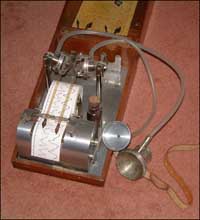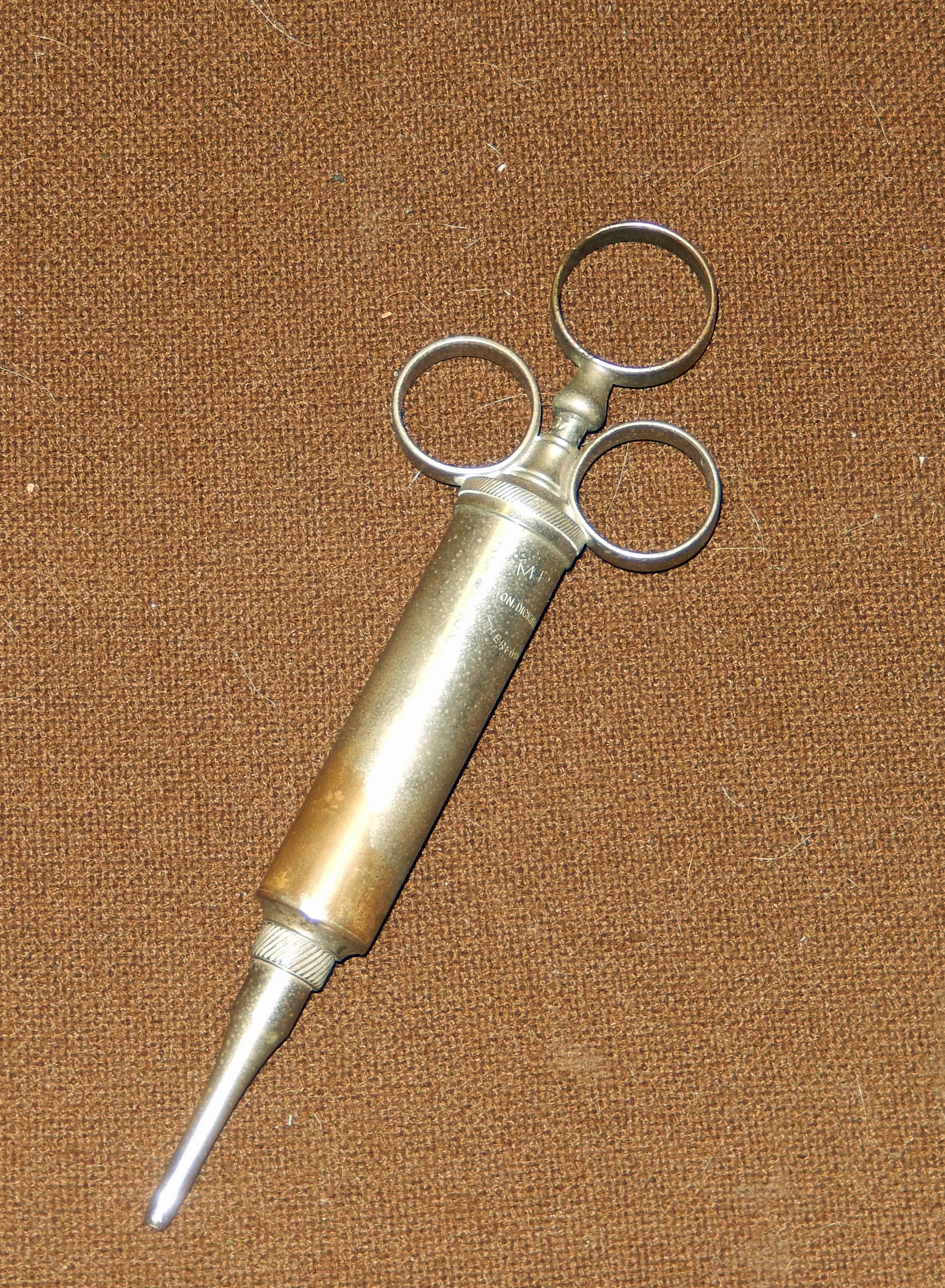Medical educators certainly have their differences, but one still discerns an emerging consensus about the kind of changes that will improve healthcare delivery and simultaneously re-humanize physician-patient encounters. Here are a few of the most progressive trends in medical education, along with brief glosses that serve to recapitulate certain themes of previous postings.
Contemporary medical training stresses the importance of teamwork and militates against the traditional narcissistic investment in solo expertise. Teamwork, which relies on the contributions of nonphysician midlevel providers, works against the legacy of socialization that, for many generations, rendered physicians “unfit” for teamwork. The trend now is to re-vision training so that the physician becomes fit for a new kind of collaborative endeavor. It is teamwork, when all is said and done, that “transfers the bulk of our work from the realm of guesswork and conjecture to one in which certainty and exactitude may be at least approached.” Must group practice militate against personalized care? Perhaps not. Recently, medical groups large and small have been enjoined to remember that “a considerable proportion of the physician’s work is not the practice of medicine at all. It consists of counseling, orienting, extricating, encouraging, solacing, sympathizing, understanding.”
Contemporary medical training understands that the patient him- or herself has become, and by rights ought to be, a member of the healthcare team. Medical educators ceded long ago that patients, in their own best interests, “should know something about the human body.” Now we have more concrete expressions of this requirement, viz., that if more adequate teaching of anatomy and physiology were provided in secondary schools, “physicians will profit and patients will prosper.” “Just because a man is ill,” notes one educator, “is no reason why he should stop using his mind,” especially as he [i.e., the patient] is the important factor in the solution of his problem, not the doctor.” For many educators the knowledgeable patient is not only a member of the “team,” but the physician’s bonafide collaborator. They assume, that is, that physician and patient “will be able to work together intelligently.” Working together intelligently suggests a “frank cooperation” in which physician and patient alike have “free access to all outside sources of help and expert knowledge.” It also means recognizing, without prejudice or personal affront, that the patient’s “inalienable right is to consult as many physicians as he chooses.” Even today, an educator observes, “doctors have too much property interest in their patients,” despite the fact that patients find their pronouncements something less than, shall we say, “oracular.” Contemporary training inherits the mantle of the patient rights revolution of the 1970s and 80s. Educators today recognize that “It is the patient who must decide the validity of opinion from consideration of its source and probability.” Another speaks for many in reiterating that
It is the patient who must decide the validity of opinion from consideration of its source and probability. If the doctor’s opinion does not seem reasonable, or if the bias of it, due to temperament or personal and professional experience is obvious, then it is well for the patient to get another opinion, and the doctor has no right to be incensed or humiliated by such action.
Contemporary medical training stresses the importance of primary care values that are lineal descendants of old-style general practice. This trend grows out of the realization that a physician “can take care of a patient without caring for him,” that the man or woman publicly considered a “good doctor” is invariably the doctor who will “find something in a sick person that aroused his sympathy, excited his admiration, or moved his compassion.” Optimally, commentators suggest, multispecialty and subspecialty groups would retain their own patient-centered generalists – call them, perhaps, “therapeutists” — to provide integrative patient care beyond diagnostic problem-solving and even beyond the conventional treatment modalities of the group. The group-based therapeutist, while trained in the root specialty of his colleagues, would also have specialized knowledge of alternative treatments outside the specialty. He would, for example, supplement familiarity with mainstream drug therapies with a whole-patient, one might say a “wholesome” distrust of drugs.
Contemporary training finally recognizes the importance of first-hand experience of illness in inculcating the values that make for “good doctoring.” Indeed, innovative curricula now land medical students in the emergency rooms and clinics with (feigned) symptoms and histories that invite discomfiting and sometimes lengthy interventions. Why has it taken educators so long to enlarge the curriculum in this humanizing manner? If, as one educator notes, “It is too much to ask of a physician that he himself should have had an enigmatic illness,” it should still be a guiding heuristic that “any illness makes him a better doctor.” Another adds: “It is said that an ill doctor is a pathetic sight; but one who has been ill and has recovered has had an affective experience which he can utilize to the advantage of his patients.”
The affective side of a personal illness experience may entail first-hand experience of medicine’s dehumanizing “hidden curriculum.” Fortunate the patient whose physician has undergone his or her own medical odyssey, so that life experience vivifies the commonplace reported by one seriously ill provider: “ I felt I had not been treated like a human being.” A physician-writer who experienced obscure, long-term infectious illness early in his career and was shunted from consultant to consultant understands far better than healthy colleagues that physicians “are so prone to occupy themselves with the theoretical requirements of a case that they lose sight entirely of the human being and his life story.” Here is the painful reminiscence of another ill physician of more literary bent:
There had been no inquiry of plans or prospects, no solicitude for ambitious or desires, no interest in the spirit of the man whose engine was signaling for gas and oil. That day I determined never to sentence a person on sight, for life or to death.
Contemporary medical training increasingly recognizes that all medicine is, to one degree or another, psychiatric medicine. Clinical opinions, educators remind us, can be truthful but still contoured to the personality, especially the psychological needs, of the patient. Sad to say, the best clinical educators are those who know colleagues, whatever their specialty, who either “do not appreciate that constituent of personality which psychologists call the affects . . . and the importance of the role which these affects or emotions play in conditioning [the patient’s] destiny, well or ill, or they refuse to be taught by observation and experience.” This realization segues into the role of psychiatric training in medical education, certainly for physicians engaged in primary care, but really for all physicians. Among other things, such training “would teach him [or her] that disease cannot be standardized, that the individual must be considered first, then the disease.” Even among patients with typical illnesses, psychiatric training can help physicians understand idiosyncratic reactions to standard treatment protocols. It aids comprehension of the individual “who happens to have a very common disease in his own very personal manner.”
_____________
These trends encapsulate the reflections and recommendations of progressive medical educators responsive to the public demand for more humane and humanizing physicians. The trends are also responsive to the mounting burnout of physicians – especially primary care physicians – who, in the cost-conscious, productivity-driven, and regulatory climate of our time, find it harder than ever to practice patient-centered medicine. But are these trends really so contemporary? I confess to a deception. The foregoing paraphrases, quotations, and recommendations are not from contemporary educators at all. They are culled from the popular essays of a single physician, the pioneer neurologist Joseph Collins, all of which were published in Harper’s Monthly between 1924 and 1929.[1]
Collins is a fascinating figure. An 1888 graduate of New York University Medical College, he attended medical school and began his practice burdened with serious, sometimes debilitating, pulmonary and abdominal symptoms that had him run the gauntlet of consultant diagnoses – pneumonia, pulmonary tuberculosis, “tuberculosis of the kidney,” chronic appendicitis, even brain tumor. None of these authoritative pronouncements was on the mark, but taken together they left Collins highly critical of his own profession and pushed him in the direction of holistic, collaborative, patient-centered medicine. After an extended period of general practice, he segued into the emerging specialty of neurology (then termed neuropsychiatry) and, with his colleagues Joseph Fraenkel and Pearce Bailey, founded the New York Neurological Institute in 1909. Collins’s career as a neurologist never dislodged his commitment to generalist patient-centered care. Indeed, the neurologist, as he understood the specialty in 1911, was the generalist best suited to treat chronic disease of any sort.[2]
Collin’s colorful, multifaceted career as a popular medical writer and literary critic is beyond the scope of this essay.[3] I use him here to circle back to a cardinal point of previous writings. “Patient-centered/relationship-centered care,” humanistic medicine, empathic caregiving, behavioral adjustments to the reality of patients’ rights – these additives to the medical school curriculum are as old as they are new. What is new is the relatively recent effort to cultivate such sensibilities through curricular innovations. Taken together, public health, preventive medicine, childhood vaccination, and modern antibiotic therapy have (mercifully) cut short the kind of experiential journey that for Collins secured the humanistic moorings of the biomedical imperative. Now medical educators rely on communication skills training, empathy-promoting protocols, core-skills workshops, and seminars on “The Healer’s Art” to close the circle, rescue medical students from evidence-based and protocol-driven overkill, and bring them back in line with Collins’s hard-won precepts.
It is not quite right to observe that these precepts apply equally to Collins’s time and our own. They give expression to the care-giving impulse, to the ancient injunction to cure through caring (the Latin curare) that, in all its ebb and flow, whether as figure or ground, weaves through the fabric of medical history writ large. Listen to Collins one final time as he expounds his philosophy of practice in 1926:
It would be a wise thing to devote a part of medical education to the mind of the physician himself, especially as it concerns his patients. For the glories of medical history are the humanized physicians. Science will always fall short; but compassion covereth all.[4]
[1] Joseph Collins, “The alienist in court,” Harper’s Monthly, 150:280-286, 1924; Joseph Collins, “A doctor looks at doctors,” Harper’s Monthly, 154:348-356, 1926; Joseph Collins, “Should doctors tell the truth?”, Harper’s Monthly, 155:320-326, 1927; Joseph Collins, “Group practice in medicine,” Harper’s Monthly, 158:165-173, 1928; Joseph Collins, “The patient’s dilemma,” Harper’s Monthly, 159:505-514, 1929. I have also consulted two of Collins’s popular collections that make many of the same points: Letters to a Neurologist, 2nd series (NY: Wood, 1910) and The Way with the Nerves: Letters to a Neurologist on Various Modern Nervous Ailments, Real and Fancied, with Replies Thereto Telling of their Nature and Treatment (NY: Putnam, 1911).
[2] Collins, The Way with Nerves, p. 268.
[3] Collins’s review of James Joyce’s Ulysses, the first by an American, was published in The New York Times on May 28, 1922. His volume The Doctor Looks at Literature: Psychological Studies of Life and Literature (NY: Doran, 1923) appeared the following year.
[4] Collins, “A doctor looks at doctors,” p. 356. Collins’s injunction is exemplified in “The Healer’s Art,” a course developed by Dr. Rachel Naomi Remen over the past 22 years and currently taught annually in 71 American medical colleges as well as medical colleges in seven other countries. See David Bornstein, “Medicine’s Search for Meaning,” posted for The New York Times/Opinionator on September 18, 2013 (http://opinionator.blogs.nytimes.com/2013/09/18/medicines-search-for-meaning/?_r=0).
Copyright © 2013 by Paul E. Stepansky. All rights reserved.







